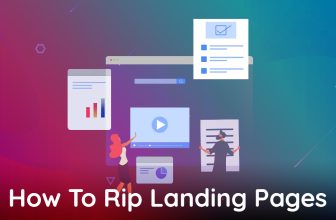
In this article, we’ll walk you through tips on how to optimize your YouTube Video campaigns for conversions. Advertisers who follow these best practices for their Video action campaigns tend to drive over 50% more conversions per dollar and experience at least a 40% higher conversion rate compared to those who don’t follow these practices.
Optimize Your Campaign Right From Start
While setting up your Youtube ads campaign, keep an eye on the notifications that align with your chosen settings. These notifications serve as alerts, flagging potential issues that could negatively impact your campaign’s performance.
They may highlight concerns significant enough to hinder your campaign from going live. Stay attentive to these notifications as they guide you in avoiding pitfalls and ensuring a smoother campaign publishing process.
Track Conversions Properly
Make sure your website has conversion tracking set up, and confirm that the global site tag and everything is working correctly.
Optimize for lighter conversion events, like “add to cart” or “site visit,” and select a conversion counting option that aligns with your campaign goals. Doing so sends crucial signals to our systems, speeding up the process of achieving your desired results.
Set Your Budgets Correctly
Your budget settings play a crucial role in the optimization of your campaign for conversions.
For campaigns utilizing Target CPA bidding, it’s advisable to set a budget that is a minimum of 15 times your target CPA. Refer to the chart below to gauge the optimization timeline based on your current budget.
For campaigns employing Maximize conversions bidding, ensure that the daily budget is a minimum of 10 times your anticipated video CPA.
Choose The Right Bidding Strategy
If you have a specific video CPA (Cost Per Acquisition) in mind, begin with Target CPA bidding. If you’re unsure about your video CPA, you can follow the bid guidance recommendations provided by Google Ads during your campaign setup.
On the other hand, if your main objective is to maximize conversions, especially for a seasonal or promotional campaign, consider starting with Maximize conversions bidding.
Start With Custom Audiences
When you first launch your campaign, start with utilizing custom segments, such as those based on search keywords, Customer Match, or data segments. Additionally, consider opting for optimized targeting to extend the reach to individuals more likely to convert.
For custom segments based on search keywords, incorporate around 10–15 suggested keywords derived from your past conversion performance or the keywords that have historically yielded the highest conversions.
If you’re employing a data segment or Customer Match, pair it with a similar segment within the same campaign. Ensure that you remain opted-in to optimized targeting to ensure effective audience targeting on iOS, especially considering Apple’s changes to user privacy and data use for iOS 14.
Avoid Content Targeting
Don’t include content targeting, including keywords, topics, or placements, in your campaign, has the potential to restrict your campaign’s performance. Video campaigns oriented towards driving conversions often exhibit better performance when devoid of such content targeting elements.
Make Creative Variants
Include sitelink extensions or incorporate multiple creative variants (aim for at least 5 if possible, each with a distinct call-to-action button, headline, or video asset).
Clear call to action: Utilize phrases such as “Learn more,” “Sign up,” or “Buy now.”
Capture audience attention: Engage viewers within the initial 5–10 seconds by presenting a problem statement and demonstrating how your product or service resolves it.
Reiterate your offer: Repeat the call-to-action either through voiceover or by incorporating it into superimposed graphics.
After setting up your campaign, observe its performance for 7–10 days before implementing optimizations.
Scale For More Conversions
If your campaign is hitting its goals and securing a minimum of 5 conversions daily over the past 14 days, implement these effective strategies to amplify your campaign impact.
Run your campaigns for a minimum of 4 weeks to potentially achieve a 15% boost in efficiency. If your campaign is restricted by its budget, consider increasing the overall budget following the recommendations provided in Google Ads during the campaign setup.
Ensure that at least one campaign in your Google Ads account is targeting in-market segments. If your campaign involves demographic targeting layers, remove the demographic segment layering from at least one ad group per campaign.
Optimize your campaign by enabling Google video partners in the settings, extending your reach beyond YouTube to high-quality publisher websites and mobile apps.
Do video experiments, use a tracker as your testing tool, to identify the most effective creative strategies for new content and optimize your ads accordingly.
Video experiments allow you to set up tests comparing different video ads based on their conversion performance.
To further scale your conversions, consider running Discovery campaigns alongside Video ad campaigns.
Conclusion
In conclusion, by consistently monitoring and optimizing your Google Ads campaigns, you can not only troubleshoot and address issues but also unlock their full potential.
Following the outlined best practices, adjusting budgets strategically, and utilizing advanced tools such as video experiments can lead to improved efficiency and increased conversions. Remember, success in digital marketing often hinges on a dynamic and informed approach, adapting to the landscape of online marketing.







